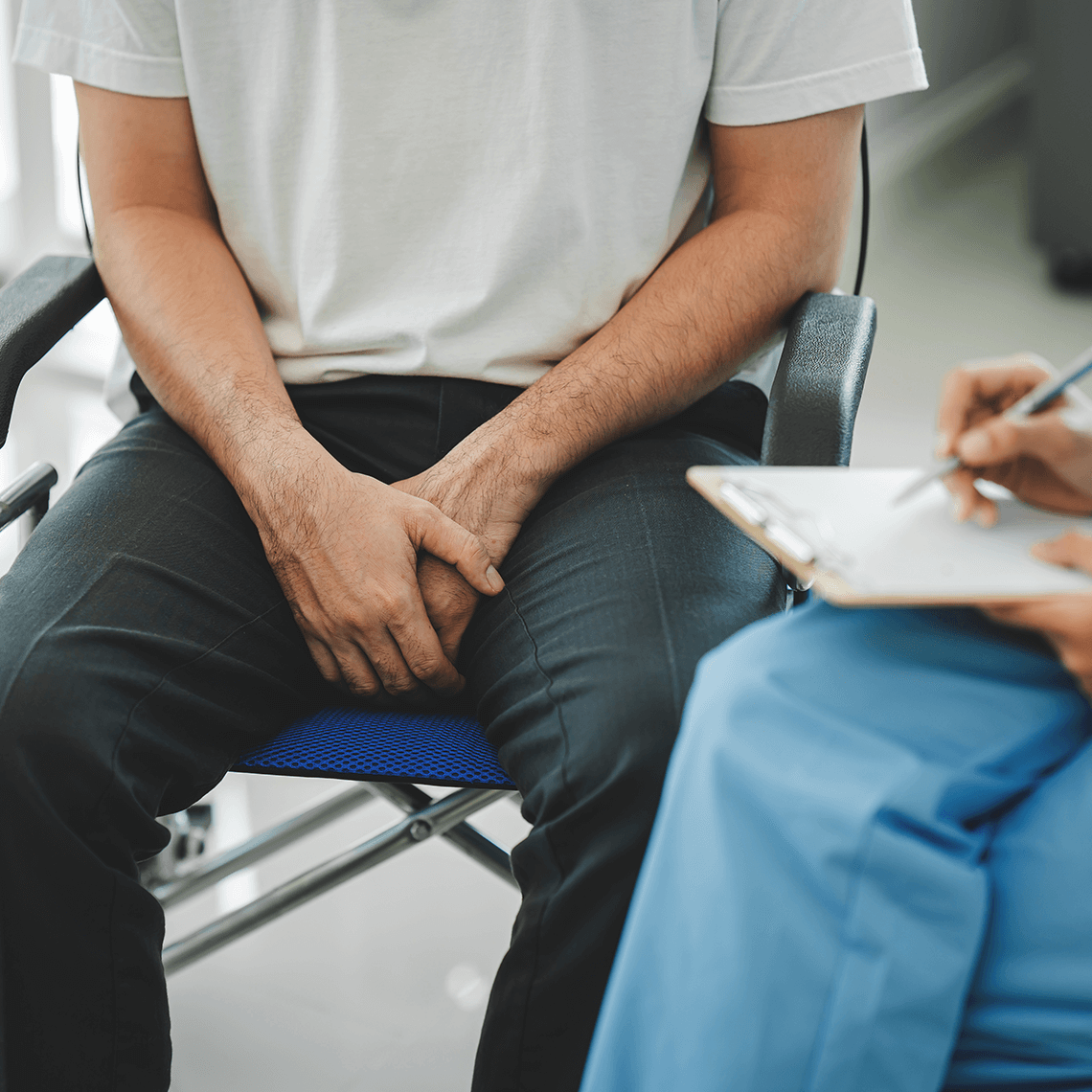Podcast
Harvard Researcher: Hospitals Can Do Better Diagnosing Deadly Sepsis
Oct 23, 2019

This podcast is an episode of Safety Net. You can find other episodes and subscribe using the links to the right.
Commentators
- Michael Filbin, MD
Transcript
Welcome to Safety Net, a patient safety podcast with news, trends and ideas—from CRICO, the insurance program for all of the Harvard medical institutions and their affiliates; bringing a data-driven approach to reducing medical error through clinical analysis of malpractice claims.
Thank you for joining us. I’m Tom Augello with CRICO and today we’re talking about sepsis in the hospital and why the diagnosis is late sometimes. My guest is Dr. Michael Filbin, a researcher and a emergency medicine doctor at Massachusetts General Hospital in Boston. Dr. Filbin, thank you for joining us.
A) Hi, Tom, thanks for having me.
Q) You’ve done a lot of research into sepsis, some of it funded through Harvard’s Malpractice and Patient Safety Company, CRICO. Can you give us a little context for the concerns medicine has about sepsis care?
A) Yes, the major concern is that sepsis is really common and it’s really deadly. It accounts for five percent of the patients we admit to the hospital and a third of hospital deaths. So, one of the major problems, especially for us in the emergency department, is it’s often difficult to detect and I think as a result, it’s the source of a lot of malpractice claims.
Q) We’re looking at sepsis in the emergency department and how we can get better at diagnosing and treating it on time. What are the challenges that are unique to emergency departments when it comes to sepsis?
A) The challenges of sepsis in the emergency department are really a combination of factors. So, number one, about 80 percent of sepsis cases have their first contact with a healthcare system in the emergency department. So, the burden is really on us to make the diagnosis. Number two, it’s often a hard diagnosis to make because sepsis is a syndrome. So, the combination of factors that make up the diagnosis—namely, the presence of an infection that leads to organ dysfunction—and it turns out that the presence of infection or organ dysfunction can initially be subtle or nonexistent. So, a lot of patients that are infected, and doesn’t lead to organ dysfunction, and a lot of patients with organ dysfunction that don’t have infections. So, number three, and somewhat related, we see a lot of patients who could have sepsis but they ultimately don’t. So, our works has shown that it’s actually about a seven to one ratio. So, for every seven patients who could have sepsis, there’s really only one patient that actually has it. So, it’s a little bit like finding a needle in a haystack.
Q) Right. Now, what do we do with the finding that many times these patients present with symptoms that are vague? A part of your research has shown the characteristics that go along with delays in diagnosis when symptoms are not clear cut.
A) Right, so, basically our research found that vague symptoms are a killer. So, we specifically focused one of our studies on presenting symptoms of the septic patient and astoundingly we found that 37 percent of patients we admit to the ICU with sepsis have symptoms initially that wouldn’t even point us to infection. So, no fevers, no chills or anything that would point us to the fact that the patient even had an infection. So, these patients presented with confusion, weakness, malaise, shortness of breath, symptoms we would consider as vague, and the patients that presented with vague symptoms had much higher mortality than the patients that presented with obvious infections—34 percent versus 16 percent. And, in fact, when we looked at all other factors that contribute to mortality, the vague symptoms were actually the strongest predictor, and this is the first time this has been reported in a literature.
Q) Wow. And in one of your studies, you used a sepsis protocol that aimed for a really aggressive standard for antibiotic treatment, within an hour of triage. And you concluded that that was too ambitious. Why?
A) Well, okay, so we totally advocate for the rapid treatment of sepsis, and within an hour of triage is great. But our point though is that this is not a practical standard to hold emergency physicians to and to make part of a national metric, which is really what the recent Surviving Sepsis Campaign guidelines updates are recommending. So, our study actually showed that only 15 percent of the septic patients presented triage with explicit symptoms of infection along with low blood pressure. So, we’d really have to give antibiotics to everybody directly from triage who had any possibility of infection or organ dysfunction, which like I said before is about seven patients for every one patient that’s actually septic. And you can kind of make the argument that that’s unacceptable and unrealistic and would promote overuse of antibiotics.
Q) Right. And one of your studies looked at a couple of different diagnostic tools. Some seemed to work better than others and based on all of this research you’ve done, what do you think can really make a difference faster in terms of a hospital reducing its undiagnosed sepsis rate? What do you think is the sort of the best combination of protocols and tools more from a practical perspective?
A) Right. I’m going to give you the cop-out answer and say it’s a combination of interventions. We’ve kind of shown it’s this combination, wrapped into a well-organized cute QA package that has strong support from local leadership. So, we’ve taken the lessons learned from our research and incorporated them into EPIC-based tools that have been implemented Partners-wide with collaborators from around the enterprise. Really, and the purpose of these tools is to assist clinicians with the challenges of timely sepsis care. So, a few highlights that were a direct product of our research, so, number one: automated early warning alerts based on our derived criteria. Number two: reporting tools that give us access to large amounts of clinical data on sepsis patients, which in turn allows us to provide direct feedback to clinicians on the patients they cared for. Number three, tested mechanisms for providing that feedback and number four, mechanisms within EPIC to flag patients that are at risk for sepsis, kind of as a way to open communications into the entire care team.
Q) And what are some other important factors that you think are associated with delays in antibiotics that could actually inform best screening practices?
A) We did an analysis, and in the end, we had two years-worth of data on our sepsis patients. And we looked at the factors that were associated with antibiotic delays. And like I said, “vague symptoms” was at the top list. Number three was actually the decision that the triage nurse makes of where to triage the patient. So, either to our acute area, which is the area with higher resources or to non-acute areas. And it turns out that a quarter of our septic shock patients who went to the ICU were initially being triaged at the non-acute area initially didn’t look infected or sick. So, as a result of this finding we developed a nursing triage tool to help identify patients at risk for sepsis right from the start. So, they’re the tools based on our identification criteria, which focuses on having a broad suspicion for possible infection. It’s also based on having a sepsis risk factor so, elderly and chronically ill patients are more frequently septic. And then having abnormal triage vital signs, which are actually automatically populated into the tool. It triggers to the nurse, so, the patient’s at risk, and allows them to triage the patient to the appropriate area, set the sepsis flag and kind of initiate, a coordinated sepsis response.
Q) Great. Well, thank you, Dr. Michael Filbin, sepsis researcher and emergency medicine doctor at Massachusetts General Hospital in Boston. I’m Tom Augello.
About the Series
We’ve got you.
Our Safety Net podcast features clinical and patient safety leaders from Harvard and around the world, bringing you the knowledge you need for safer patient care.
Episodes
$1.5 Billion in Miscommunication: Medmal Data Report Finds Opportunities
Case Dismissed! Every Medical Defendant’s Dream Still Holds Some Nightmares

Expert: Communication Is Top Fix for Prostate Care Allegations

How Depositions Make or Break a Medmal Defense


